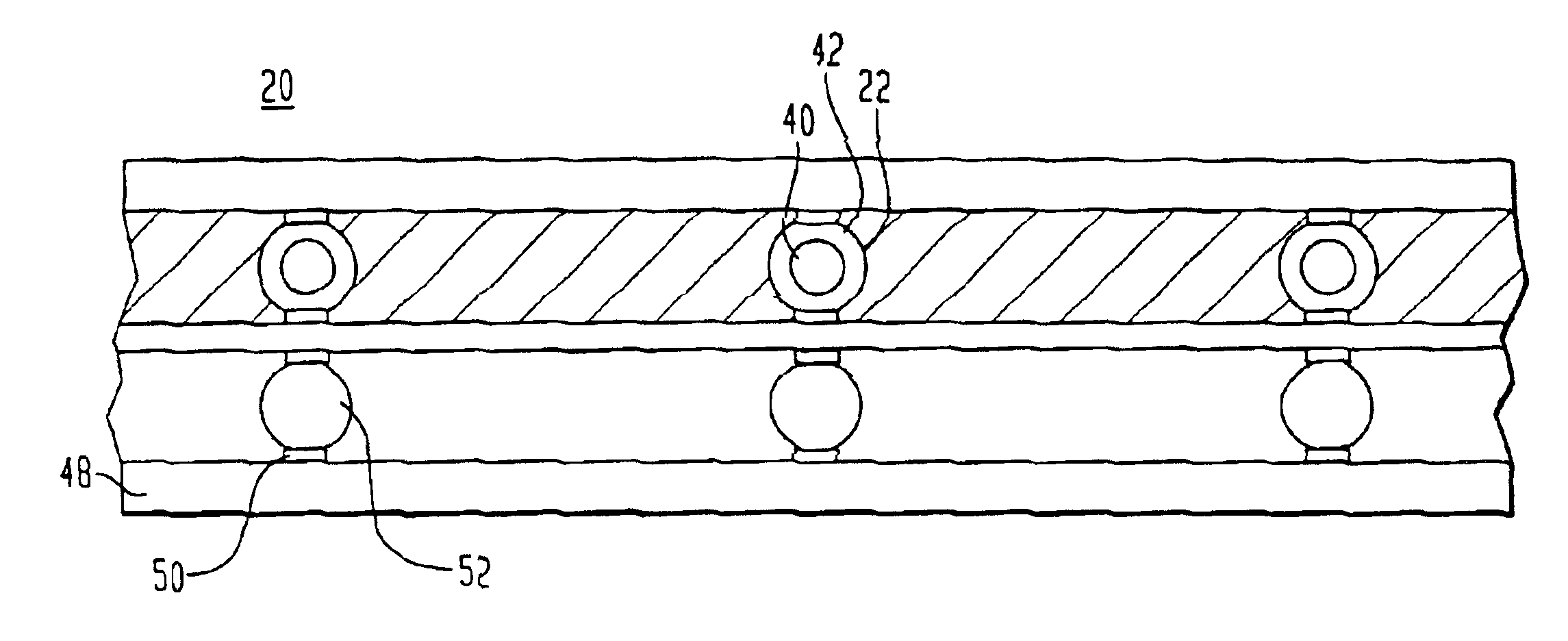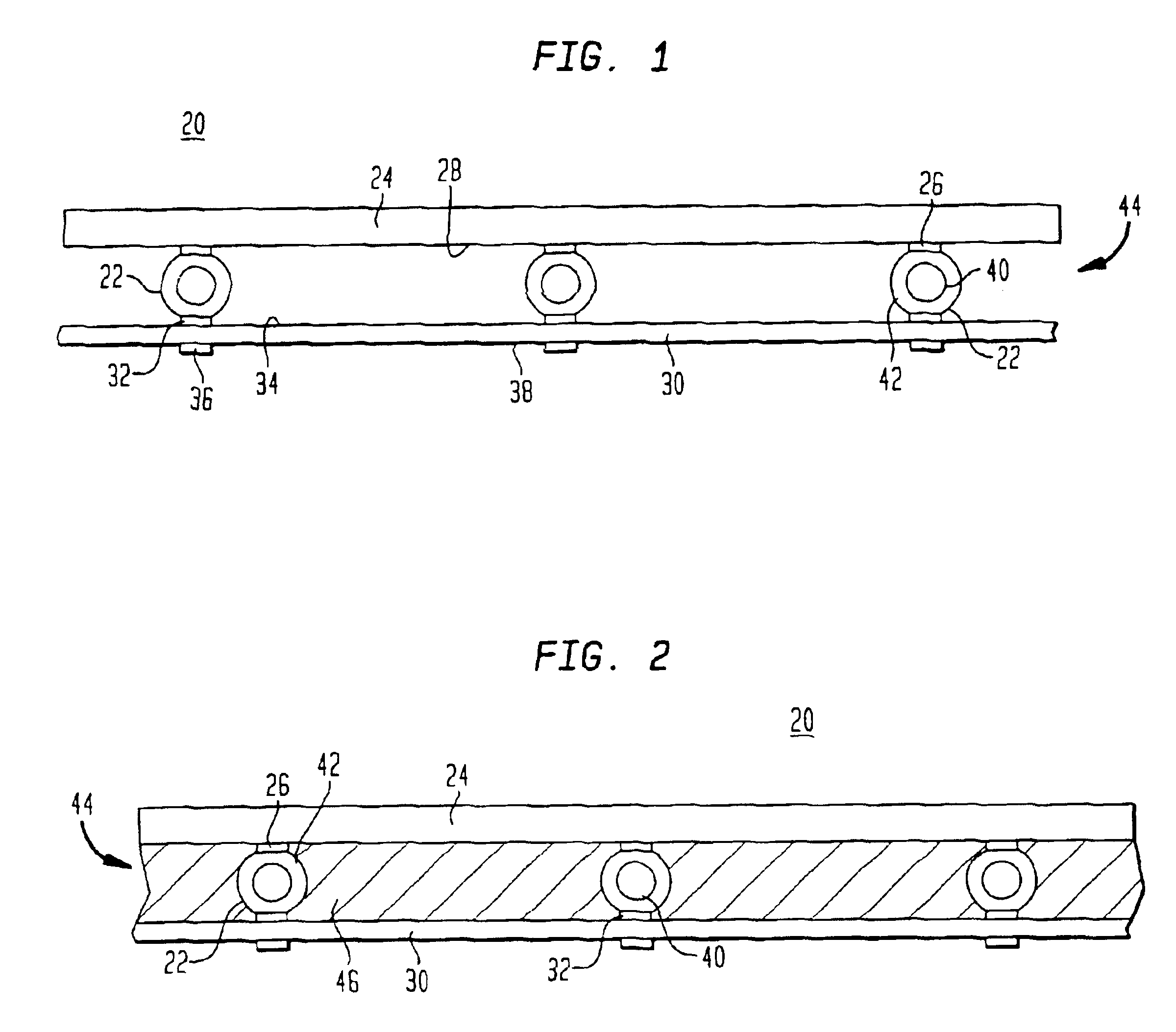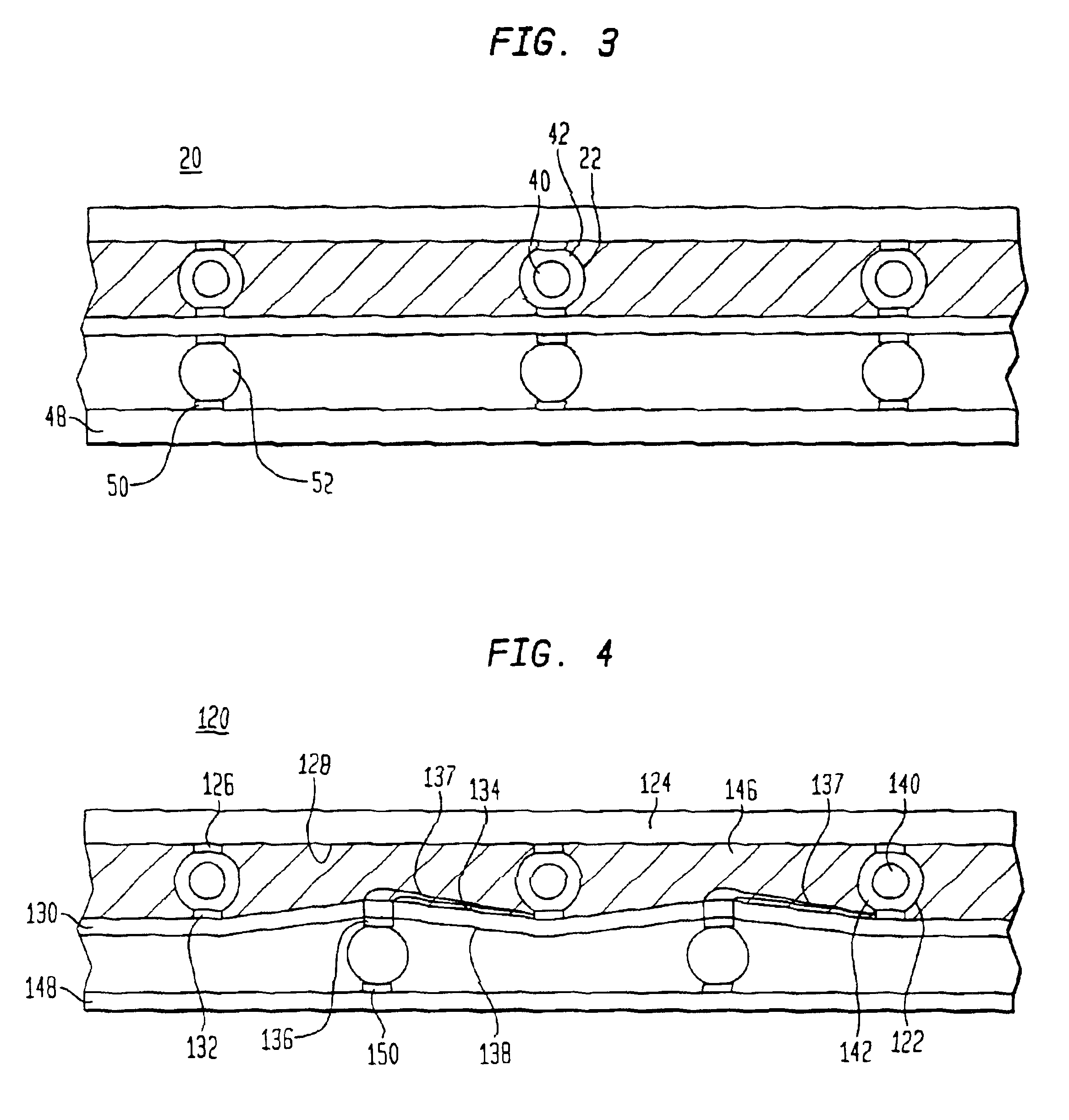Microelectronic assemblies with composite conductive elements
a technology of composite conductive elements and microelectronic assemblies, which is applied in the direction of dielectric characteristics, sustainable manufacturing/processing, and final product manufacturing, etc., can solve the problems of severe strain on electrical elements connecting the chip and the substrate, component shrinkage or contraction, and further movement of the chip relative to the substrate, so as to facilitate the movement of the microelectronic elements, reduce the amount of relatively expensive low-melting alloy, and facilitate the effect of microelectronic elemen
- Summary
- Abstract
- Description
- Claims
- Application Information
AI Technical Summary
Benefits of technology
Problems solved by technology
Method used
Image
Examples
Embodiment Construction
One embodiment of the present invention provides a microelectronic assembly 20 (FIG. 1) having composite conductive elements 22. The microelectronic assembly 20 preferably includes a first microelectronic element 24, such as a semiconductor chip, having a plurality of contacts 26 on a front face 28 thereof. The assembly 20 also includes a second microelectronic element 30, such as a flexible dielectric film, having first contacts 32 on a first surface 34 thereof. The dielectric film 30 may also have second contacts 36 on a second surface 38 thereof which are in registration with the first contacts 32. A plurality of the composite conductive elements 22 are preferably provided over the contacts 32 on the first surface 34 of the dielectric film 30. Each composite conductive element 22 desirably includes a core 40 which is preferably in the shape of a sphere. The core 40 may include a conductive material, such as metal, or a dielectric (non-conductive) material, such as an elastomer. T...
PUM
 Login to View More
Login to View More Abstract
Description
Claims
Application Information
 Login to View More
Login to View More - R&D
- Intellectual Property
- Life Sciences
- Materials
- Tech Scout
- Unparalleled Data Quality
- Higher Quality Content
- 60% Fewer Hallucinations
Browse by: Latest US Patents, China's latest patents, Technical Efficacy Thesaurus, Application Domain, Technology Topic, Popular Technical Reports.
© 2025 PatSnap. All rights reserved.Legal|Privacy policy|Modern Slavery Act Transparency Statement|Sitemap|About US| Contact US: help@patsnap.com



